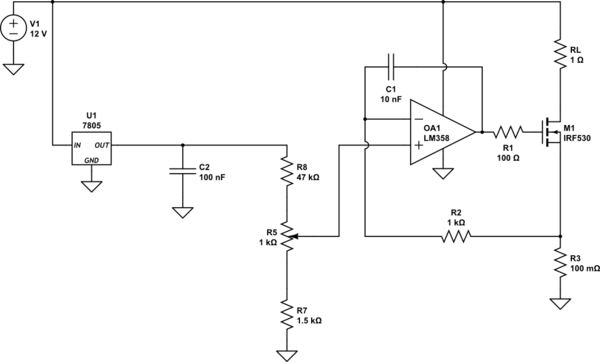I need a variable current source as part of a power supply for an experiment I'm building. This part should heat up a filament, so the load is pretty constant. Timing is not a factor either. So what I'm looking for is a pretty simple solution, much simpler than a lot of circuits I find online. But all the simple circuits, like the ones attached are often calculated for small currents. I need a regulation between 1.5A and 2.5A and my question is if someone has experience with such simple circuits and higher currents. Of course I would use other parts like power transistor and other resistors but heat and efficiency could be problems, but I don't know to which degree. I study physics, so I'm no expert in electrical engineering.
I hope someone could give some intuitive answer. Thanks


